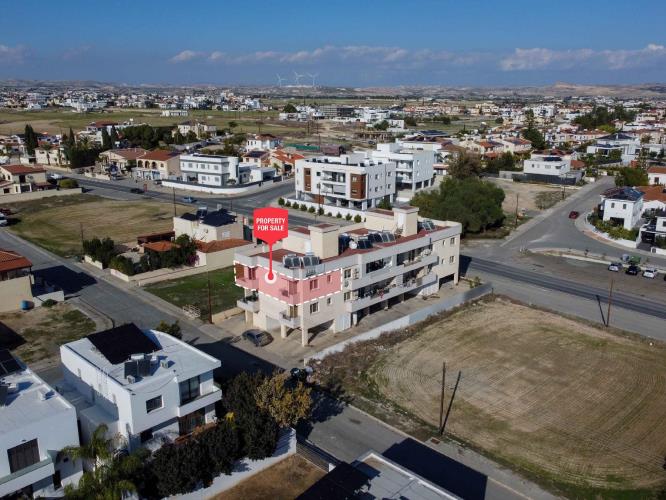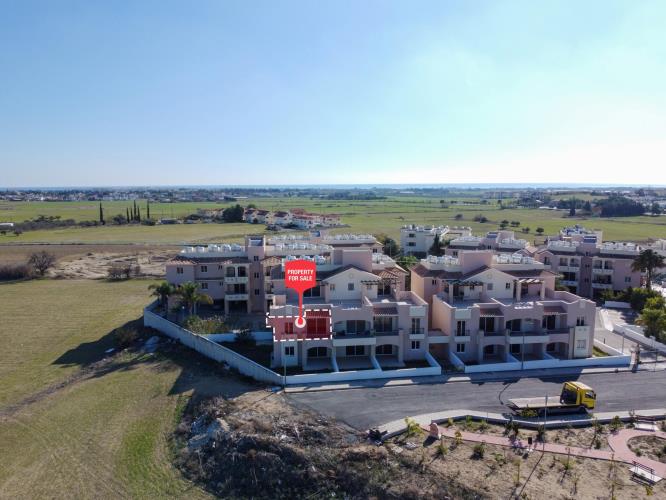“Buy land; they aren’t making any more!” is a quote by Mark Twain, often used by agents to encourage transaction activity. Although there is a common sense element to it, it is completely false.
As counterintuitive as it may seem, we make land all the time; it just doesn’t look like land. Land’s value doesn’t come from our ability to cover up the naked earth with buildings. Land’s value comes from its economic usefulness, from the value of things that can be done using that land. How much of it can be constructed and what can be done are both derivatives of the town planning system. Thus, economic cycles and the town planning system have a direct impact on how much land there is available for each use, although in the short run supply remains inelastic.
Looking at the residential property markets of Greece and Cyprus, there are three observations that should frame any assessment. Firstly, both countries have plenty of undeveloped land and an abundance of property rights associated with it. Secondly, there is an oversupply of residential properties, albeit some of really poor quality or in secondary locations. Thirdly, the demographics of both countries have been reversed, compared to the past decade, and are now working against them. Demographics and socio-economic changes have a direct impact on the residential market, as they affect the number and type of units demanded, e.g. a growing population requires more units, whilst a lower number of family members per household results in smaller units being demanded.
From 2001 to 2011, the population of Greece and Cyprus increased by 188,000 (2%) and 142,000 (20%) respectively. This was mainly a result of in-migration, with 91% of the increase in Greece and 75% of that in Cyprus being attributed to immigrants. At the same time however, the population under 15 years old decreased by 60,000 (4%) in Greece and 14,000 (9%) in Cyprus. It seems that whilst the population in both countries increased due to an inflow of migrants, the birth-rate by locals decreased resulting in the overall population “aging” over the period. As the economic position of both countries has worsened since 2011, their respective populations have decreased with immigrants seeking employment elsewhere and many locals, typically young couples at the reproductive age, moving permanently overseas.
It is important to contrast the above with Ireland, where from 2001 to 2011 its population increased by 740,000, 56% of which was the result of in-migration. Importantly, over the same period the population under 15 years old increased by 144,000 (17%). The Irish residential market appears to have a more sustainable outlook, as its population is increasing and that will fuel demand for new developments.
Demographics and socio-economic changes are likely to play an increasingly important role as the population of Europe is aging and young migrants are attracted to countries in the west and north of the continent. The result is likely to be a more acute case of oversupply of residential markets in South Eastern Europe, where existing stock is unlikely to be able to cater for the needs of future generations and an aging population. Future generations will likely have smaller households requiring a smaller number of rooms and be more demanding in terms of quality. An aging population will require that houses are converted or repurposed to accommodate their healthcare needs, whilst some units are abandoned as they are no longer suitable, e.g. big houses across multiple storeys, units far away from healthcare providers, etc.
These developments are quite similar to what happened to conurbations in mountainous areas post WWII due to industrialisation and urbanisation, but also to cities in ex-communist bloc countries who relied exclusively on a specific product or industry which is no longer needed. Decay is increasingly going to become part of our vocabulary and will bring with it a new set of challenges, along with the changes that online sales, the Cloud, and 3-D printing, are bringing to retail, office working, and manufacturing respectively. Unfortunately, balancing these changes will not be on the back of a growing population as it has been in the past.
As counterintuitive as it may seem, we make land all the time; it just doesn’t look like land. Land’s value doesn’t come from our ability to cover up the naked earth with buildings. Land’s value comes from its economic usefulness, from the value of things that can be done using that land. How much of it can be constructed and what can be done are both derivatives of the town planning system. Thus, economic cycles and the town planning system have a direct impact on how much land there is available for each use, although in the short run supply remains inelastic.
Looking at the residential property markets of Greece and Cyprus, there are three observations that should frame any assessment. Firstly, both countries have plenty of undeveloped land and an abundance of property rights associated with it. Secondly, there is an oversupply of residential properties, albeit some of really poor quality or in secondary locations. Thirdly, the demographics of both countries have been reversed, compared to the past decade, and are now working against them. Demographics and socio-economic changes have a direct impact on the residential market, as they affect the number and type of units demanded, e.g. a growing population requires more units, whilst a lower number of family members per household results in smaller units being demanded.
From 2001 to 2011, the population of Greece and Cyprus increased by 188,000 (2%) and 142,000 (20%) respectively. This was mainly a result of in-migration, with 91% of the increase in Greece and 75% of that in Cyprus being attributed to immigrants. At the same time however, the population under 15 years old decreased by 60,000 (4%) in Greece and 14,000 (9%) in Cyprus. It seems that whilst the population in both countries increased due to an inflow of migrants, the birth-rate by locals decreased resulting in the overall population “aging” over the period. As the economic position of both countries has worsened since 2011, their respective populations have decreased with immigrants seeking employment elsewhere and many locals, typically young couples at the reproductive age, moving permanently overseas.
It is important to contrast the above with Ireland, where from 2001 to 2011 its population increased by 740,000, 56% of which was the result of in-migration. Importantly, over the same period the population under 15 years old increased by 144,000 (17%). The Irish residential market appears to have a more sustainable outlook, as its population is increasing and that will fuel demand for new developments.
Demographics and socio-economic changes are likely to play an increasingly important role as the population of Europe is aging and young migrants are attracted to countries in the west and north of the continent. The result is likely to be a more acute case of oversupply of residential markets in South Eastern Europe, where existing stock is unlikely to be able to cater for the needs of future generations and an aging population. Future generations will likely have smaller households requiring a smaller number of rooms and be more demanding in terms of quality. An aging population will require that houses are converted or repurposed to accommodate their healthcare needs, whilst some units are abandoned as they are no longer suitable, e.g. big houses across multiple storeys, units far away from healthcare providers, etc.
These developments are quite similar to what happened to conurbations in mountainous areas post WWII due to industrialisation and urbanisation, but also to cities in ex-communist bloc countries who relied exclusively on a specific product or industry which is no longer needed. Decay is increasingly going to become part of our vocabulary and will bring with it a new set of challenges, along with the changes that online sales, the Cloud, and 3-D printing, are bringing to retail, office working, and manufacturing respectively. Unfortunately, balancing these changes will not be on the back of a growing population as it has been in the past.
















